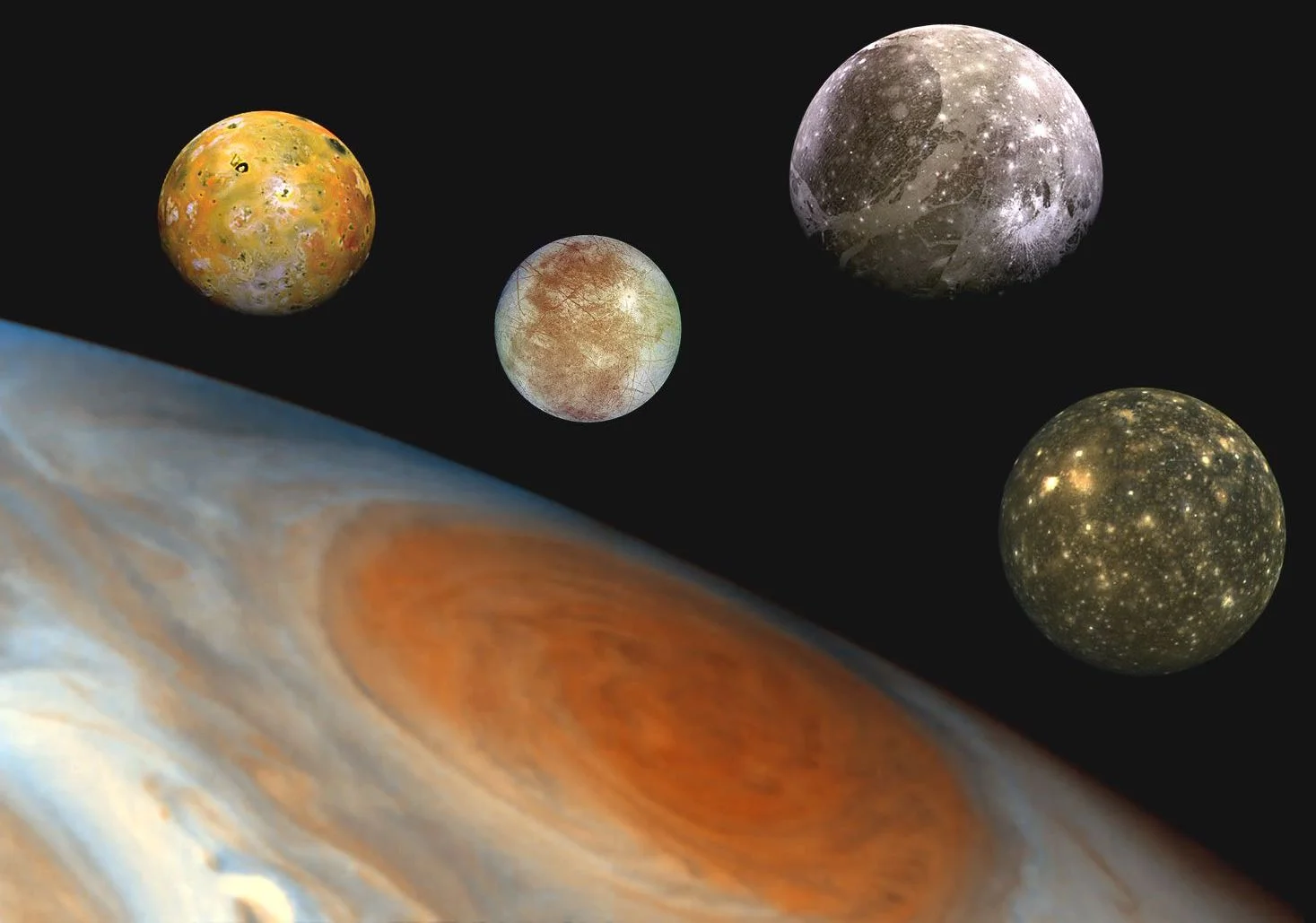The year of space exploration has been full of notable events, which include the successful conclusion of Nasa’s Artemis 1 mission, the introduction of the James Webb Space Telescope, and the completion of China’s Tiangong space station. The upcoming year, 2023, promises to be equally eventful with five fascinating missions to anticipate.
1. Jupiter Icy Moons Explorer
The Jupiter Icy Moons Explorer (Juice), Europe’s first robotic mission to Jupiter, is scheduled for launch by the European Space Agency (ESA) in April. By following a remarkable trajectory through the solar system, Juice is expected to reach Jupiter in July 2031. The mission will involve orbiting Jupiter and conducting several flybys of its vast icy moons: Europa, Ganymede, and Callisto.
Following four years of flybys of these moons, Juice will then enter into orbit around Ganymede, the largest moon in the solar system, marking the first time a spacecraft has achieved orbit around another planet’s moon. The icy moons of Jupiter are intriguing because they are all believed to possess liquid water oceans beneath their frozen surfaces. Europa, in particular, is considered one of the most likely locations in the solar system to harbour extraterrestrial life.
2. SpaceX Starship
As of now, aerospace company SpaceX has not announced a specific launch date. However, the initial orbital test flight of the super-heavy Starship spacecraft is highly anticipated to take place in early 2023. Starship is set to become the most massive spacecraft capable of carrying humans from Earth to various destinations in space. Although the International Space Station is larger, it was assembled in space. The Starship is set to become the strongest launch vehicle in history, capable of carrying a maximum of 100 metric tons of cargo into low Earth orbit.
Starship refers to a two-part system composed of the Starship spacecraft, which transports the crew and cargo, and the Super Heavy rocket. The rocket element will raise Starship to around 65 km in altitude before separating and executing a controlled landing back on Earth.
3. dearMoon
The much-anticipated dearMoon initiative, which involves taking members of the public on a six-day journey around the moon and back, is slated to launch on Starship and was initially scheduled for 2023. The precise launch date will be determined by the successful testing of Starship, but has been on the radar since 2018. It will be the first genuine deep space tourism mission.
This mission represents a significant change in our perception of space, as only astronauts selected through extremely rigorous criteria have previously been permitted to travel into deep space (please note: we are not counting brief 10-minute forays up to 100 km). A multi-day excursion presents significant risks in terms of both health and engineering.
The outcome of the dearMoon endeavour will have a significant impact on whether deep space tourism becomes the next big thing or remains a distant dream.
4. Asteroid Explorer Returns To Earth
The mission of the Origins Spectral Interpretation Resource Identification Security-Regolith Explorer, also known as OSIRIS-REx, is to acquire samples of the near-Earth asteroid Bennu and bring them back to Earth for analysis. If everything goes according to plan, the capsule will detach from the spacecraft, enter Earth’s atmosphere, and land safely in Utah’s deserts on September 24. Only one mission, the Japanese Space Agency’s Hayabusa 2 mission in 2020, has successfully returned asteroid samples to Earth before.
Bennu is a roughly diamond-shaped asteroid with a size of just half a kilometre. It is believed to have broken off from a much larger asteroid within the first 10 million years of the solar system. Bennu is also interesting due to its minerals, some of which have been altered by water, indicating that its parent body once had liquid water. Additionally, the asteroid has an abundance of valuable metals like gold and platinum. Finally, it is classified as a potentially hazardous object with a very small chance of colliding with Earth within the next century.
5. India’s Private Space Launch
Skyroot Aerospace successfully launched the Vikram-S rocket in November 2022, reaching a height of 90km. However, further improvements are needed to achieve orbit and launch a constellation of satellites. The company aims to launch its first satellite in 2023 and plans to lower the cost of private space launches by producing 3D-printed rockets in a matter of days. Cheaper launches could lead to more scientific missions and increased research opportunities. The high level of interest in the space sector is reminiscent of the “Golden era” of space launches in the 1960s and ’70s, with many exciting advances and launches expected in 2023.
Conclusion
In conclusion, the year 2023 promises to be an exciting time for space exploration. With five missions set to explore new horizons and push the boundaries of human knowledge, there is much to look forward to. These expeditions are sure to capture the imaginations of space enthusiasts around the world!



